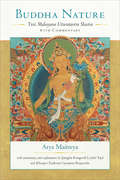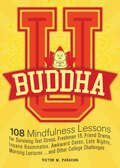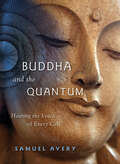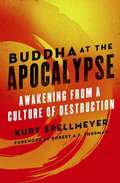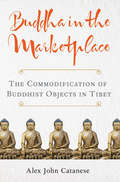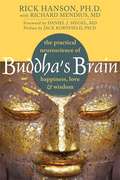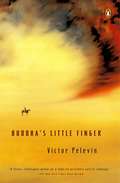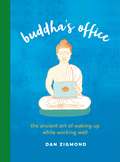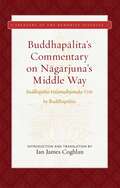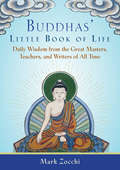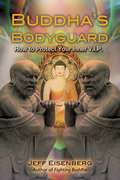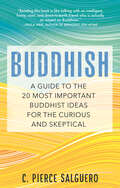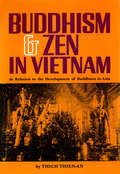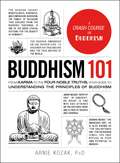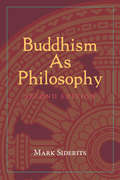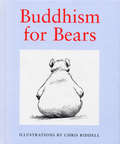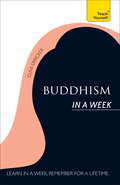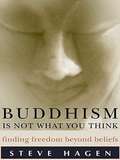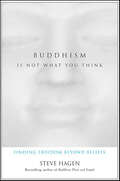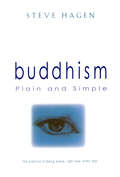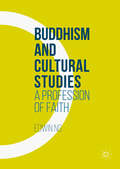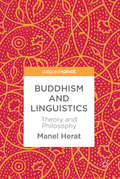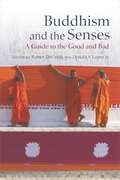- Table View
- List View
Buddha Nature: The Mahayana Uttaratantra Shastra with Commentary
by Khenpo Tsultrim Gyamtso Jamgon Kongtrul Lodro Taye Rosemarie Fuchs Arya MaitreyaThe Buddha's definitive teachings on how we should understand the ground of enlightenment and the nature and qualities of buddhahood.All sentient beings, without exception, have buddha nature—the inherent purity and perfection of the mind, untouched by changing mental states. Thus there is neither any reason for conceit nor self-contempt. This is obscured by veils that are removable and do not touch the inherent purity and perfection of the nature of the mind. The Mahayana Uttaratantra Shastra, one of the “Five Treatises” said to have been dictated to Asanga by the Bodhisattva Maitreya, presents the Buddha’s definitive teachings on how we should understand this ground of enlightenment and clarifies the nature and qualities of buddhahood. This seminal text details with great clarity the view that forms the basis for Vajrayana, and especially Mahamudra, practice.
Buddha U: 108 Mindfulness Lessons for Surviving Test Stress, Freshman 15, Friend Drama, Insane Roommates, Awkward Dates, Late Nights, Morning Lectures...and Other College Challenges
by Victor M. ParachinA GO-TO GUIDE FOR CONQUERING THE OBSTACLES OF MODERN COLLEGE LIFE USING TIMELESS BUDDHIST PRINCIPLESWhat&’s the secret to surviving college? Staying calm and focused—what a Buddhist would call mindfulness. Whether you feel lost, overwhelmed or depressed, Buddha U teaches the healthy perspective that will keep you on the path to a great college experience.Divided into 108 straightforward lessons that approach life day by day, Buddhist principle by principle, this book will transform your college life into a well-managed, stress-free experience. As you put them into practice, you will find yourself ending one academic year with immense satisfaction and anticipating the new one with great enthusiasm.
Buddha and the Quantum: Hearing the Voice of Every Cell
by Samuel AveryBuddha and the Quantum is about the connection between meditation and physics. Many books show parallels between consciousness and physics; a few of these attempt to explain consciousness in terms of the physics of everyday experience.
Buddha at the Apocalypse
by Kurt Spellmeyer Robert ThurmanTimely and audacious, Buddha at the Apocalypse challenges us to look directly at the devastating assumptions underlying the very mechanisms of the modern world - and offers a clarion call to awaken from a pervasive culture of destruction into a natural, sustainable, and sane peace. Kurt Spellmeyer references the Bible, popular culture, Zen, and Western philosophy in addressing two questions: how did we get here, and what can we do now. An answer to pervasive cynicism and decline, Buddha at the Apocalypse shows how to accept and connect with reality in dark times.
Buddha in the Marketplace: The Commodification of Buddhist Objects in Tibet (Traditions and Transformations in Tibetan Buddhism)
by Alex John CataneseClassical Tibetan Buddhist scriptures forbid the selling of Buddhist objects, and yet there is today a thriving market for Buddhist statues, paintings, and texts. In Buddha in the Marketplace, Alex John Catanese investigates this practice, which continues to be viewed as a form of "wrong livelihood" by modern Tibetan Buddhist scholars. Drawing on textual and historical sources, as well as ethnographic research conducted in the region of Amdo, Tibet, Catanese follows the trajectory of Buddhist objects from their status as noncommodities prior to the Cultural Revolution to their emergence as commodities on the open market in the modern period. The book examines why Tibetans have more recently begun to sell such objects for their personal livelihoods when their religious tradition condemns such business activities in the strongest possible terms. Addressing the various societal and religious ramifications of these commercial practices, Catanese illustrates how such activity is leading to significant cultural and economic changes, transforming the "moral economy" associated with Buddhist objects, and contributing to a reinterpretation of Tibetan Buddhist identity.
Buddha's Brain: The Practical Neuroscience of Happiness, Love, and Wisdom
by Rick Hanson Richard MendiusJesus, Moses, Mohammed, Gandhi, and the Buddha all had brains built essentially like anyone else's, yet they were able to harness their thoughts and shape their patterns of thinking in ways that changed history. With new breakthroughs in modern neuroscience and the wisdom of thousands of years of contemplative practice, it is possible for us to shape our own thoughts in a similar way for greater happiness, love, compassion, and wisdom. Buddha's Brain joins the forces of modern neuroscience with ancient contemplative teachings to show readers how they can work toward greater emotional well-being, healthier relationships, more effective actions, and deepened religious and spiritual understanding. This book will explain how the core elements of both psychological well-being and religious or spiritual life-virtue, mindfulness, and wisdom--are based in the core functions of the brain: regulating, learning, and valuing. Readers will also learn practical ways to apply this information, as the book offers many exercises they can do to tap the unused potential of the brain and rewire it over time for greater peace and well-being.
Buddha's Little Finger
by Victor PelevinThe Russian author Victor Pelevin is rapidly establishing a reputation as one of the most brilliant young writers at work today. His comic inventiveness and talent as a pure fabulist have won him comparisons to Kafka, Calvino, Bulgakov, Gogol, Phillip K. Dick, and Joseph Heller, and Time magazine has described him as a "psychedelic Nabokov for the cyberage. " In Pelevin's new novel, Buddha's Little Finger, Pyotr Void, a leading St. Petersburg poet, unexpectedly finds himself in the midst of the 1919 civil war in Russia, serving as commissar to the legendary Bolshevik commander Vasily Ivanovich Chapaev and his formidable machine-gunner sidekick, Anna. But what is the secret of her machine gun? Why does Pyotr keep waking to find himself in a psychiatric hospital in Moscow in the 1990s? And where does Arnold Schwarzenegger fit into all this? Shifting between time and place and spinning story upon story, Buddha's Little Finger is unlike any other novel, a work of demonic absurdism that demonstrates Pelevin's genius for metaphysical comedy.
Buddha's Office: The Ancient Art of Waking Up While Working Well
by Dan ZigmondCan enlightenment be found at the office? From the co-author of Buddha's Diet comes another book that shows how the wisdom of Buddha can apply to our modern lives -- this time exploring how Buddha's guidance can help us navigate the perils of work life. Without setting foot in an office, Buddha knew that helping people work right was essential to helping them find their path to awakening. Now more than ever, we need Buddha's guidance. Too many of us are working long hours, dealing with difficult bosses, high-maintenance coworkers, and non-stop stress. We need someone to help remind us that there is a better way. With Buddha's wisdom at the core of every chapter, Buddha's Office will help you learn how to stop taking shortcuts and pay more attention, care for yourself and others, deal with distractions, and incorporate Buddha's ageless instructions into our modern working life.It's time to wake up and start working in a more enlightened way. One that is right for you, right for our health, right for your sanity, and right for the world.
Buddhapalita's Commentary on Nagarjuna's Middle Way: Buddhapalita-Mulamadhyamaka-Vrtti (Treasury of the Buddhist Sciences)
by BuddhapalitaA masterful translation of classic scholar Buddhapalita&’s breakthrough elucidation of Nagarjuna&’s famous Middle Way text, which has profoundly influenced generations of Buddhist philosophers.This &“Buddhapalita&” commentary on Nagarjuna&’s famous first-century text Wisdom: Fundamental Middle Way Verses has been considered for over a thousand years by Indian and Tibetan philosophers to be the special key that best unlocks the deep philosophical freedom from confusion and perplexity that the Middle Way (or Centrist) school seeks to provide for its students. Chandrakirti (seventh century) defended Buddhapalita&’s elegant approach as most effective in opening the Middle Way for the inquiring mind to find the liberating experience of reality. Atisha (eleventh century) brought Buddhapalita&’s and Chandrakirti&’s transformative critical method to spread widely in Tibet, and Tsongkhapa (fifteenth century) provided a clarification of this philosophical work that was so rigorous and crystal clear that it opened the minds of Tibetan philosopher scientists of all schools until today. Ian Coghlan&’s masterful translation makes Buddhapalita&’s breakthrough elucidation of the Wisdom Verses clearly accessible. The translator&’s unique education combines the Indo-Tibetan geshé curriculum with the modern doctoral training that adds comparative text-critical analysis and comparative language research in Sanskrit as well as Tibetan. This intellectual and experiential education enabled him to produce this reliable translation for the philosophical seeker to fully engage with Buddhapalita&’s richly transformative, liberating work.
Buddhas' Little Book of Life: Daily Wisdom from the Great Masters, Teachers, and Writers of All Time
by Mark ZocchiInspired by teachings of the Buddha, great masters, teachers, and writers, this is a book designed to help people connect to their inner divinity and find their spiritual path. It is overflowing with profound quotes, sayings, and insights, each presented on its own to allow the reader to dip in randomly and consider one insight at a time. Each reading is guaranteed to immediately inspire or provide food for thought. <P><P>The quotations and sayings have been chosen from Gautama Buddha and other masters of spirituality and inspiration, such as Milarepa, Longchenpa, his Holiness the 14th Dalai Lama, Thich Nhat Hanh, Sogyal Rinpoche, and other greats such as Cicero, Rumi, Lao Tzu, Mother Teresa, and Shakespeare. <P><P>This book is designed to live on your desk, coffee table, or nightstand to provide you with daily comfort, wisdom, and spiritual nourishment. <P><P>“When my house burned down, I gained an unobstructed view of the moon.” —Zen <P><P>“There is no master, there is no instructor, there is no person to tell you what you must do.” —Krishnamurti <P><P>“To abandon what is harmful To adopt what is wholesome To purify the heart and mind: This is the teaching of the Buddha.” —Buddha
Buddha’s Bodyguard: How to Protect Your Inner V.I.P.
by Jeff EisenbergAn innovative guide to applying the strategies of a bodyguard to create a Buddhist “security plan” for protecting ourselves from suffering • Presents the unique concept of the “bodyguard” and its protection tactics as a metaphor for explaining and implementing Buddhist teachings • Recasts the Four Noble Truths as the Four Noble Tactical Truths, the Eightfold Path as the Eight Tactics Plan, and the notion of Interbeing in the Buddhist world as the Tactics of Interdepending • Offers a new, modern understanding for the new generation of Buddhist practitioners intrigued by a more Western take on Buddhism Drawing from his extensive experience as a professional protection agent, Jeff Eisenberg uses the tactics and strategies that a bodyguard employs in protecting a client from a threat as a blueprint for creating a Buddhist “security plan.” This plan provides the practical tools to protect one’s self from the threat of suffering in our world. Using the metaphor of being the Buddha’s bodyguard to understand the Buddhist teachings, the book details how to protect our inner “Buddha nature” and secure our mental and emotional wellbeing. We all have the chance to train ourselves to be more proactive in our own safety and avoid becoming a victim. And if we are victimized, this training will prepare us to take appropriate actions that will aid in our ability to survive with much less injury and trauma. As the author affirms: “It is vital to realize that a physical altercation is the last thing that happens in a chain of events. And while we must never blame the victim, our safety is our responsibility. Many situations can be avoided, or their severity greatly lessened, if we pay attention during the chain of events that leads up to it and respond appropriately.” While this book is not about personal protection per se, it applies personal protection theory and specific tactics utilized by bodyguards to Buddhist practice, laying out strategies to protect our inner Buddha from attack. Thus the Four Noble Truths are applied to the concept of “threat” in the form of Four Noble Tactical Truths, the Eight Tactics Plan echoes the Eightfold Path, and the Tactics of Interdepending embrace the notion of Interbeing in the Buddhist world. With “paying attention” and mindfulness being key concepts of both a bodyguard’s profession and Buddhist practice, this pioneering book speaks to Buddhists and non-Buddhists alike.
Buddhish: A Guide to the 20 Most Important Buddhist Ideas for the Curious and Skeptical (Encounters With Asia Ser.)
by C. Pierce SalgueroAn engaging, accessible introduction to Buddhism for those who are looking to explore a new spiritual tradition or understand the roots of their mindfulness practice.Are you curious about Buddhism but find yourself met with scholarly texts or high-minded moralizing every time you try to pick up a book about it? Well, if so, relax. This is no ordinary introduction to Buddhism; there are none of the saccharine platitudes and dense pontification that you may have come to expect. Buddhish is a readable introduction for complete newcomers that provides an objective, streamlined overview of the tradition – from unpacking the Four Noble Truths to understanding what &“nirvana&” actually means. For those who have already dipped their toes into the tradition through the practice of mindfulness or meditation, this guide will help you create a more well-rounded and informed experience by delving into the history of the Buddhist traditions that shape a mindful practice. Buddhist scholar Dr. Pierce Salguero analyzes the ideas and philosophy of the complex tradition through the eyes of both a critic and an admirer. He shares anecdotes from his time at a Thai monastery, stories from the years he spent living throughout Asia, and other personal experiences that have shaped his study of Buddhism. Through this guide, readers will have the opportunity to develop an approach to practice that is not quite Buddhist but Buddhish. Through engaging and lighthearted stories, Dr. Salguero breaks down 20 central principles of the tradition, including: • Awakening • Suffering • Doubt • Karma • Buddha Nature
Buddhism & Zen in Vietnam
by Thich Thien-AnBuddhism & Zen in Vietnam provides, for Western readers, a much needed introduction to this important religion-its history, practices, concepts, and role in the lives of the people, the nation, and Vietnamese culture.
Buddhism 101: From Karma to the Four Noble Truths, Your Guide to Understanding the Principles of Buddhism
by Arnie KozakA Simon & Schuster eBook. Simon & Schuster has a great book for every reader.
Buddhism As Philosophy
by Mark SideritsIn Buddhism As Philosophy, Mark Siderits makes the Buddhist philosophical tradition accessible to a Western audience. Offering generous selections from the canonical Buddhist texts and providing an engaging, analytical introduction to the fundamental tenets of Buddhist thought, this revised, expanded, and updated edition builds on the success of the first edition in clarifying the basic concepts and arguments of the Buddhist philosophers.
Buddhism For Bears
by Chris RiddellBears are seriously underestimated creatures when it comes to spirituality and religious feeling. For the first time, this book recognises their huge potential and offers ursine students of Buddhism everywhere the opportunity to focus their skills and follow the path to enlightenment. From the meditation to the essential concepts of Zen, all the fundamentals are set out here in a series of concise interpretations of Buddhist teaching. Wonderfully illustrated by well-known illustrator Chris Riddell, this is the perfect gift with a difference.
Buddhism In A Week: Teach Yourself
by Clive ErrickerLearn in a week, remember for a lifetime!In just one week, this accessible book will give you knowledge to last forever. End of chapter summaries and multiple choice questions are all designed to help you test your knowledge and gain confidence. So whether you are a student or you simply want to widen your knowledge, you will find this seven-day course a very memorable introduction.Sunday: Consider what Buddhism is and why it mattersMonday: Learn who the Buddha was and how he livedTuesday: Examine the Buddha's teaching on a wide range of issuesWednesday: Discover the Buddhist scriptures and learn how they are interpreted today.Thursday: Explore meditation and Buddhist devotional practices.Friday: Engage with the ethics of Buddhism, and how Buddhists respond to moral issuesSaturday: Clarify procedures for disciplinary interviews
Buddhism In A Week: Teach Yourself
by Clive ErrickerLearn in a week, remember for a lifetime!In just one week, this accessible book will give you knowledge to last forever. End of chapter summaries and multiple choice questions are all designed to help you test your knowledge and gain confidence. So whether you are a student or you simply want to widen your knowledge, you will find this seven-day course a very memorable introduction.Sunday: Consider what Buddhism is and why it mattersMonday: Learn who the Buddha was and how he livedTuesday: Examine the Buddha's teaching on a wide range of issuesWednesday: Discover the Buddhist scriptures and learn how they are interpreted today.Thursday: Explore meditation and Buddhist devotional practices.Friday: Engage with the ethics of Buddhism, and how Buddhists respond to moral issuesSaturday: Clarify procedures for disciplinary interviews
Buddhism Is Not What You Think: Finding Freedom Beyond Beliefs
by Steve HagenAccomplished Zen teacher explores some of the religions most essential questions. Draws on life experience and stories of various Buddhist teachers in order to dispel misconceptions and educate on topics such as wisdom, compassion, awareness, and what it means to be awake. Written in prose, The author's words are meant to appeal to newcomers and those who are already familiar with the faith. Hagen explains that Buddhism is based on life experience and not just thoughts about experience. The book aims to guide the reader towards a path to joy and freedom.
Buddhism Is Not What You Think: Finding Freedom Beyond Beliefs
by Steve HagenA practical, straight-forward guide to the true purpose of Buddhism, examining the essential & enduring questions at the heart of the Buddha’s teachings.Bestselling author and renowned Zen teacher Steve Hagen penetrates the most essential and enduring questions at the heart of the Buddha’s teachings: How can we see the world in each moment, rather than merely as what we think, hope, or fear it is? How can we base our actions on reality, rather than on the longing and loathing of our hearts and minds? How can we live lives that are wise, compassionate, and in tune with reality? And how can we separate the wisdom of Buddhism from the cultural trappings and misconceptions that have come to be associated with it?Drawing on down-to-earth examples from everyday life and stories from Buddhist teachers past and present, Hagen tackles these fundamental inquiries with his trademark lucid, straightforward prose. The newcomer to Buddhism will be inspired by this accessible and provocative introduction, and those more familiar with Buddhism will welcome this much needed hands-on guide to understanding what it truly means to be awake. By being challenged to question what we take for granted. We come to see the world as it truly is. Buddhism Is Not What You Think offers a profound and clear path to joy and freedom.Praise for Buddhism Is Not What You Think “Hagen’s writing flows in a tranquil way, like a spring trickling up effortlessly from the earth. One tends to stop judging it and just appreciate it for its own sake. Since this appreciation is his advice for dealing with everything, the sentences themselves actually create what they are describing.” —Robert M. Pirsig, author of Zen and the Art of Motorcycle Maintenance“This is not just another nice book about Buddhism, one telling us what we like to hear and are used to hearing. No—it is a clear and challenging showing of the fundamental truth of our lives. This is an exceptional book. Make good use of it.” —Charlotte Joko Beck, author of Everyday Zen
Buddhism Plain and Simple
by Steven HagenBuddhism Plain and Simple offers a clear, straightforward treatise on Buddhism in general and on awareness in particular.When Buddha was asked to sum up his teaching in a single world, he said, "Awareness." The Buddha taught how to see directly into the nature of experience. His observations and insights are plain, practical, and down-to-earth, and they deal exclusively with the present.Longtime teacher of Buddhism Steve Hagan presents the Buddha's uncluttered, original teachings in everyday, accessible language unencumbered by religious ritual, tradition, or belief.
Buddhism Plain and Simple
by Steven HagenBuddhism Plain and Simple offers a clear, straightforward treatise on Buddhism in general and on awareness in particular.When Buddha was asked to sum up his teaching in a single world, he said, "Awareness." The Buddha taught how to see directly into the nature of experience. His observations and insights are plain, practical, and down-to-earth, and they deal exclusively with the present.Longtime teacher of Buddhism Steve Hagan presents the Buddha's uncluttered, original teachings in everyday, accessible language unencumbered by religious ritual, tradition, or belief.
Buddhism and Cultural Studies: A Profession of Faith
by Edwin NgThis book explores the reciprocity between Buddhist, Derridean, and Foucauldian understandings about ethics, subjectivity, and ontological contingency, to investigate the ethical and political potential of insight meditation practice. The book is narrated from the perspective of a postcolonial 'Western Buddhist' convert who, despite growing up in Singapore where Buddhism was a part of his disaporic 'Chinese' ancestral heritage, only embraced Buddhism when he migrated to Australia and discovered Western translations of Buddhist teachings. Through an autoethnography of the author's Buddhist-inspired pursuit of an academic profession, the book develops and professes a non-doctrinal understanding of faith that may be pertinent to 'believers' and 'non-believers' alike, inviting the academic reader in particular to consider the (unacknowledged) role of faith in supporting scholarly practice. Striking a careful balance between critical analysis and self-reflexive inquiry, the book performs in all senses of the word, a profession of faith.
Buddhism and Linguistics: Theory and Philosophy
by Manel HeratThis edited collection brings linguistics into contact with a millennia of works by Buddhist scholars. Examining the Buddhist contemplative tradition and its extensive writings from an interdisciplinary perspective, the authors bridge the gap between such customs and human language. To do so, they provide chapters on linguistics, history, religious studies, philosophy and semiotics. Uniting scholars from three different continents and from many disciplines and institutions, this innovative and unique book is sure to appeal to anyone interested in Buddhist traditions and linguistics.
Buddhism and the Senses: A Guide to the Good and Bad
by Donald S. Lopez Jr. Robert DeCroliAcross Buddhist traditions, the five senses—sight, sound, smell, taste, and touch—are perceived both positively and negatively. Share our eminent scholars&’ fascination and deep insight into what makes a sensuous experience good or bad.Following on the exhibition Encountering the Buddha: Art and Practice across Asia at the National Museum of Asian Art, ten eminent scholars present their insights into Buddhism&’s fascinating relation with the five senses (sight, sound, smell, taste, and touch), which careens between delight and disgust, rarely finding a middle way. While much of Buddhist literature is devoted to overcoming the attachment that dooms us to rebirth in samsara, primarily by deprecating sense experience and showing that whatever brings us sensual pleasure leads only to physical and mental pain, in texts such as the Lotus Sutra, sensory powers do not offer sensory pleasure but rather knowledge, clear observation, and ability to teach the Dharma. Considering such religiously and historically contingent ambiguity, this volume presents each of the five senses in two instantiations, the good and the bad, opening up the discourse on the senses across Buddhist traditions. Just as the museum departed from tradition to incorporate sensory experiences into the exhibition, this volume is a new direction in scholarship to humanize Buddhist studies by foregrounding sensory experience and practice, inviting the reader to think about the senses in a focused manner and shifting our understanding of Buddhism from the conceptual to the material or practical, from the idealized to the human, from the abstract to the grounded, from the mind to the body.
